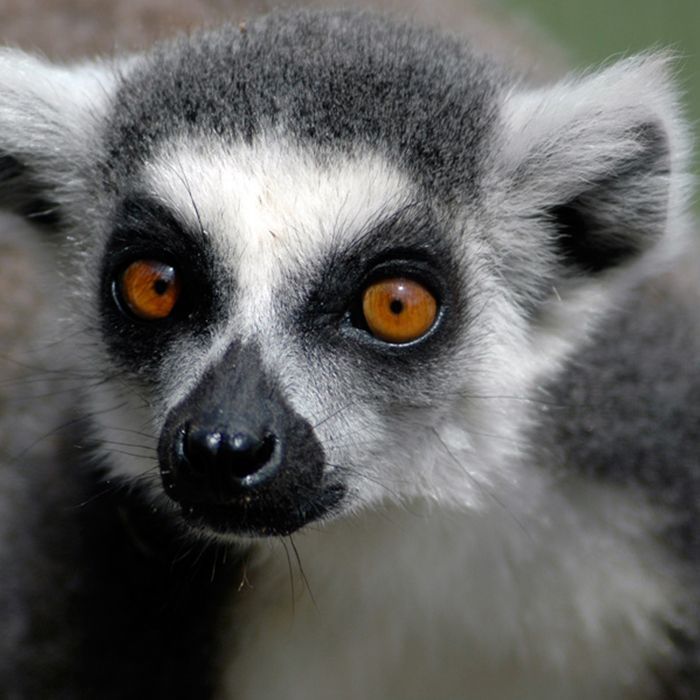Ring-tailed Lemur
The Ring Tailed Lemur, like all lemur species, is native to the island of Madagascar. It is a highly social animal and lives in groups of up to 30 with a female as the dominant animal. They are territorial and mark their space with scent glands. They spend up to a third of their time on the ground but are also adept climbers.
It is a relatively large lemur with a body length of 39 – 46 cm (15 – 18 in) and a distinctive tail longer than the body. The weight averages 2.4 kg (5 lb).
Lemurs are opportunistic omnivores. They eat primarily fruit, leaves, flowers and sap but will devour insects and small vertebrates when given the chance.
Females give birth to one offspring and occasionally twins.
It is a relatively large lemur with a body length of 39 – 46 cm (15 – 18 in) and a distinctive tail longer than the body. The weight averages 2.4 kg (5 lb).
Lemurs are opportunistic omnivores. They eat primarily fruit, leaves, flowers and sap but will devour insects and small vertebrates when given the chance.
Females give birth to one offspring and occasionally twins.
Fun Facts
They are listed as endangered by the IUCN and in CITES Appendix 1. This makes it illegal to trade in wild captured animals. They breed very well in captivity.

scientific classification
Kingdom
Animalia
Phylum
Chordata
Class
Mammalia
Order
Primates
Family
Lemuridae
Genus
Lemur
Species
L. catta
did you know?
Ring Tailed Lemurs are one of the most vocal of primates.
Females stay with the family group but males often transfer from one group to another.
Deforestation and poaching are the greatest threat to lemurs.
Where to find us
We have six Ring Tailed Lemurs at Safari Niagara. Their names are Kiwi, Diane & Cranberry and three that have not yet been named.



